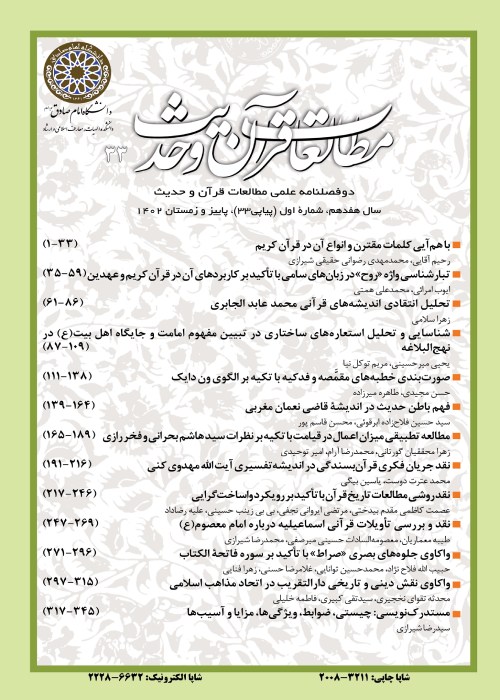Validation of the Narration “When the Muslims meet their Swords, the Murderer and the Dead are in the Fire"
In the sources of Ahl al-Sunnah narration, it is narrated from "Ahnaf ibn Qays" that he was going to help "Imam Ali (as)" in the battle, in the middle of the way, "Abu Bakrah" dissuaded him from doing so and based his reason on the Prophetic narration (hadith) said, " When the Muslims meet their swords, then the murderer and the dead one in the fire.” The republishing of the Prophetic narration in the mentioned incident has damaged the wars of Imam Ali (as) and the radiant manners and infallibility of this Great Imam, so it seems necessary to examine and validate this narration. Studies show that the prophetic narration of the conflict between two Muslims in Sunni sources has not been accurately recorded, because the omission of the provision "on non-tradition of Prophet (‘ala qayr al-sunnah)" - intentionally or inadvertently - causes a conflict with the verse "Whenever two factions of believers fall out with one another", its cause of the descent ('asbab al-nozul), and the conflict with the prophetic narrations that has been confirmed by the wars of Imam Ali (AS) and the narrations of "aggressor army (Fe’at Baqiah)". Also, its unscientific application to Amir al-Mu'minin by people such as Abu Bakrah, who were influenced by the discourse space called Fitnah (sedition) at the same time as the assassination of the third caliph and his Imamate, can be seen as an excuse for not believing in Amir al-Mu'minin. In this way, they could pretend that the above-mentioned prophetic narration was an excuse for the non-allegiance and lack of help of the Amir al-Mu'minin in their wars. Also, this distorted narration from the prophetic narration and its republishing during the Imamate of Imam Ali (as) in the discourse space of Bani Umayya along with similar narrations could have distorted the manners of that Great Imam, that republishing of this narration in the third centuries (AH) and after that especially in Sunni sources is questionable.
- حق عضویت دریافتی صرف حمایت از نشریات عضو و نگهداری، تکمیل و توسعه مگیران میشود.
- پرداخت حق اشتراک و دانلود مقالات اجازه بازنشر آن در سایر رسانههای چاپی و دیجیتال را به کاربر نمیدهد.


